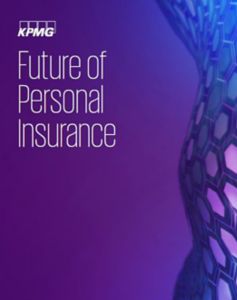The pace of change is quickening. The scope of change is broadening. And the impact of change is becoming increasingly disruptive. For personal lines insurers, the future has rarely been so uncertain.
The signals of change are everywhere: in the unpredictable economic uncertainty that continues to trouble national and global markets; in the rapidly shifting expectations of customers; in the rising importance being placed on the ESG agenda; in the innovative new models and technologies being brought to market; in the evolving competitive environment; and in the continuously-changing regulatory landscape.
Yet — as insurers know well — uncertainty and risk can create opportunity. And there is no lack of opportunity in today’s market, particularly for those who understand how the landscape is changing, what new models are emerging, and how they can harness these changes to create their own winning operating model of the future.
This report outlines KPMG’s vision for the Future of Personal Insurance. Over the following pages, we explore how these forces of change are already creating competitive opportunity for insurers. We look at the winning business models of today. And we describe some of the emergent business models we believe will drive success in the future.
Customers are looking for personalized, value-driven digital solutions. And they want experiences that put them in the driving seat. Personal lines insurers will need to make significant changes to their operating models if they hope to retain their customers and avoid becoming commoditized.
Connect with us
- Find office locations kpmg.findOfficeLocations
- kpmg.emailUs
- Social media @ KPMG kpmg.socialMedia
Emergent business models of the future
01
Purpose-led insurer: Customers want to work with insurers that put their purpose at the core of their proposition.
We expect to see peer-to-peer solutions continue to connect like-minded customers, driving greater loyalty and behaviors that reduce claims costs (a win-win for customers and insurers alike). Price and product information will become easier to understand and claims service will become simpler, quicker and fairer — thereby creating value around transparency. Customers will expect to see ESG at the heart of the purpose so they can assess how their insurers are responding to current global challenges and issues.
02
Scaled and diversified insurer: Price will remain a key purchase driver. Insurers will need to be relentless in building a low-cost model.
Meeting the changing expectations of customers (which are being influenced by experiences in other sectors) will require insurers to create end-to-end digital insurance models that enable customers to transact conveniently and easily. At the same time, insurers will need to reshape and re-size the front, middle and back-offices from end to end to drive cost reduction and more competitive pricing. We expect those who are able to transition away from legacy systems and processes at pace will be the biggest winners in the future.
03
Agile and focused insurer: Data will become a critical asset that will differentiate insurers from their peers.
Real-time data analytics will allow insurers to deliver coverage that anticipates customer needs and ensures suitable products and services are offered. Increasingly sophisticated pricing will help insurers more accurately assess their risks while also ensuring better customer outcomes through a clear focus on value for money. New sources of data will be used to support claims prevention and to enhance claims response. And, in doing so, insurers will help build customer loyalty and enhance their ability to cross-sell.
With the customer at the core, there are five critical questions retail banks should ask themselves:
Are you connecting your customers with compelling value propositions, opportunities and interactions?
Are you connecting and empowering your employees to deliver on the customer promise?
Are you connecting your front, middle and back offices to execute the customer growth agenda?
Are you connecting your ecosystem of business partners to jointly deliver on commitments to customers?
Are you connecting to market dynamics and digital signals?





